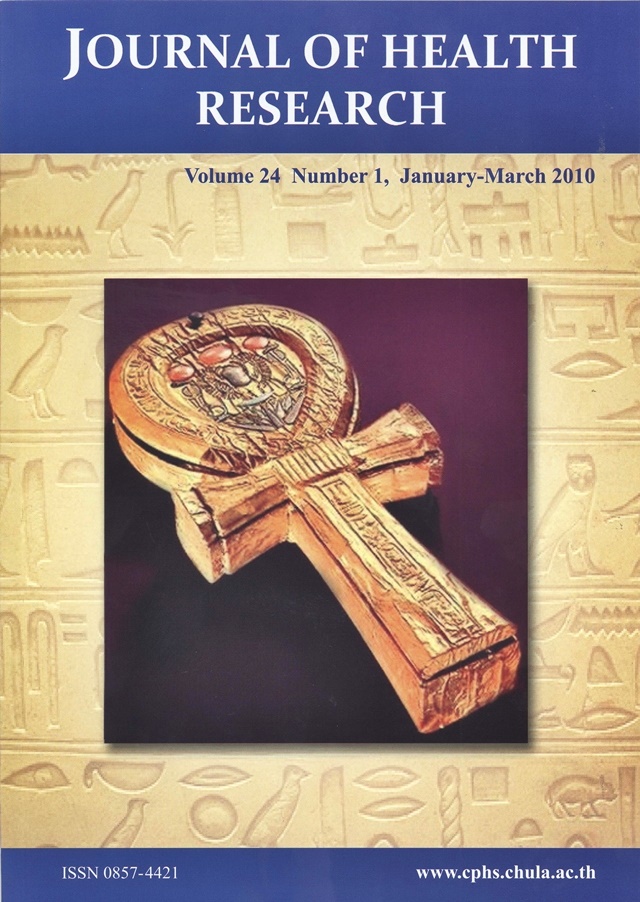Antipyretic and Antinociceptive Effects of Ben-Cha-Lo-Ka-Wi-Chian Remedy
Keywords:
Ben-Cha-Lo-Ka-Wi-Chian, LPS-induced fever, Hot-plate, Tail-flick, Writhing TestAbstract
Ben-Cha-Lo-Ka-Wi-Chian (BLW) herbal remedy is a famous antipyretic drug in Thai traditional medicine which includes roots of Ching-Chee, Khon-Thaa, Yaa-Nang, Mai-Tao-Yai-Mom and Ma-Dueo-Chumporn. We initially determined the antipyretic activity of the root extract of BLW remedy using lipopolysaccharide (LPS)-induced fever in rats compared to that of acetylsalicylic acid (ASA). Fever was induced in animals with an intramuscular injection of LPS (50 μg/kg) 1 hr after oral administration of 2% Tween 80, ASA 300 mg/kg or various doses of BLW (25-400 mg/kg). Rectal temperature was measured before the pretreatment and at 1 hr intervals for 7 hr after LPS injection. All doses of BLW significantly (p<0.05) attenuated the increased rectal temperature produced by LPS and were found to be as potent as ASA. Studies then determined the antinociceptive property of orally administered BLW (25-400 mg/kg) using hot-plate, tail-flick and acetic acid-induced writhing models in mice. Hot-plate and tailflick latencies were determined in male ICR mice prior to the administration of 0.9% normal saline solution (10 ml/kg, i.p.), morphine (10 mg/kg, i.p), 2% Tween 80 (10 ml/kg, p.o.) or various doses of BLW (25-400 mg/kg, p.o.) and were subsequently determined at 15, 30, 45, 60, 90, 120 and 240 min. The mean percent maximum possible effect (%MPE) was calculated and used in the determination of the area of analgesia (%MPE-min). BLW (400 mg/kg) produced a significant analgesic response in the hot-plate test, while all doses of BLW, except the lowest dose, produced significant analgesic responses in the tail-flick test. In acetic acidinduced writhing, mice were induced with intraperitoneal injection of 0.6% acetic acid 30 min after the oral administration of 2% Tween 80, indomethacin (10 mg/kg) or various doses of BLW (25-400 mg/kg) and the mean writhing response was determined for 30 min. BLW doses of 200 and 400 mg/kg significantly (p<0.05) decreased the mean writhing response compared to vehicle controls. Taken together these results demonstrated that BLW possesses both antipyretic and antinociceptive activities and BLW likely produced both central and peripheral analgesic responses.







